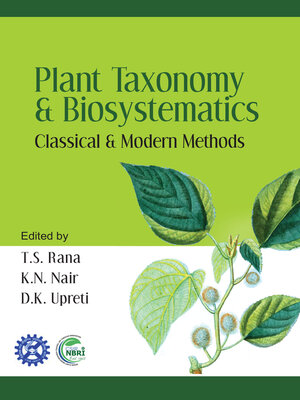
Sign up to save your library
With an OverDrive account, you can save your favorite libraries for at-a-glance information about availability. Find out more about OverDrive accounts.
Find this title in Libby, the library reading app by OverDrive.



Search for a digital library with this title
Title found at these libraries:
| Loading... |
The basic aim of this manual is to provide useful resource materials for training young students and faculties working in the area of plant systematics. The manual provides updated information on basic as well as applied aspects of plant systematics on various groups of plants like Algae, Lichens, Bryophytes, Pteridophytes, Gymnosperms and Angiosperms. 1 to 3 describe the various approaches and methods to study microbial and fungal diversity, which is basically a very useful precursor to the students and young researchers. 4 and 5 provide deals with the multi-dimensional approaches in Lichen systematics. The book progresses upwards through the plethora of information on the diversity and systematics of Algae, Bryophytes, Pteridophytes and Gymnosperms ( 6-10). 11 to 15 contain on the plant methodological details identification, approaches and methods of Flora, revision, monograph and development of herbarium. This information is very important for the students and young faculties who intend to pursue their researches in plant taxonomy. 14 and 15 particularly provide all the relevant information on the International Code of Plant nomenclature including cultivated plants. These s per se are very significant for the amateur as well as serious readers of plant taxonomy. Plant taxonomy and biosystematics is a dynamic subject, as it derives information from various other disciplines like palynology, seed morphology, pharmacognosy, molecular biology, etc. We have, therefore, broaden the scope of this book by including the s on palynology, seed morphology, molecular systematics, biostatistics, ecological and remote sensing methods for diversity analyses, and pharmacognostical tools for identification of herbal drugs ( 16-22). The knowledge and information on these applied aspects of biology in relation to taxonomy will certainly infuse the interest in readers, who are pursuing plant taxonomy as their scientific pursuits. 23 and 24 describe the various methods of characterization and evaluation of ornamental and medicinal plants. The last (25) of the book provides the information about CSIR-NBRI Botanic Garden and its various repositories, which could be of great interest to the readers from the perspectives of plant conservation.






